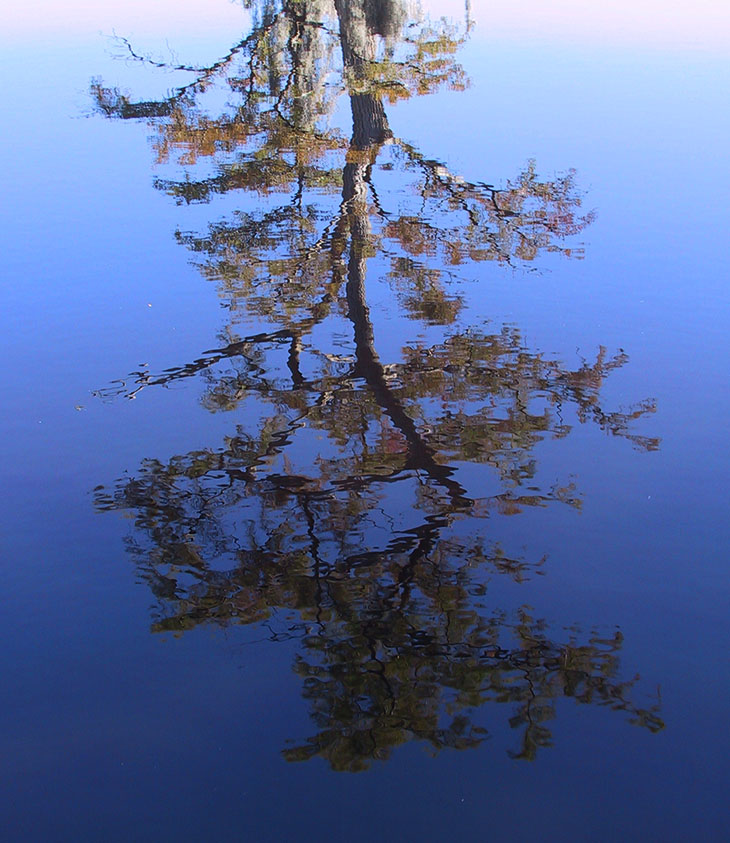
Today’s entry comes from 2014 – or is it 2013? It was actually uploaded in December 2013 for a post that didn’t appear until January of the next year, though it was taken in 2006, so how does that count, judges? We need a ruling…
I like the image, being one of the uncommon strictly fartsy attempts, but, it suffers from a digital trait that prevents it from becoming a print, unless I do a lot of screwing around with it.
Even at this resolution, if you look close at the gradient tones in the water alongside the tree, you’ll see blotchiness – this is the result of jpeg compression. Jpeg is a method of storing image files in smaller format, a flexible algorithm to weigh space versus quality. Most of the images that I upload here are at about 75% of original quality, and occasionally, like this one, it shows: there are ‘steps’ between neighboring colors. Most times, you would use a setting of higher quality/lower compression to combat this – except that this is an image from the Canon Pro90 IS, originally saved in jpeg, and it even appears in the original to a lesser degree.
This is why many photographers elect to always shoot and save their initial images in RAW format, which has no compression at all. RAW images, however, are vastly larger than even minimal compression jpeg, and this shows quickly in the number of images that can be held on memory cards, and how long it takes to download them, and how much harddrive space they perpetually stake out. I’ve done several tests with RAW formats, including exposure and detail tweaking, and it’s only in situations like this, with a lot of fine gradients (mostly in one color) that it provides an edge; everywhere else, it’s simply egregious overkill, far too many negatives to offset the positives. Even with astrophotography where fine sensitivities in brightness can be exploited/enhanced for better detail, I could find no significant benefit – often none at all – for RAW over jpeg.
Note, too, that larger files take up web server space and slow page loads down, so for web use they should always be reduced in size regardless, and the benefit of RAW would vanish in nearly all cases. Considering that this blog alone has over 6,000 images in it, this can add up quickly. And here’s the thing: had you even noticed it before I mentioned it?




















































